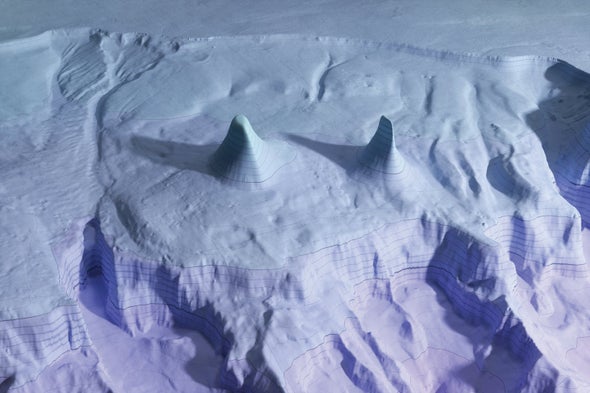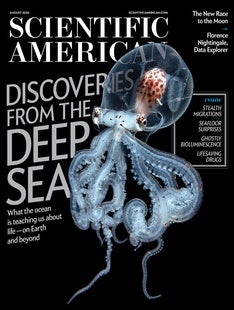
SOUTH PACIFIC, 50 MILES EAST OF CAPE YORK PENINSULA, AUSTRALIA Scientists at James Cook University in Australia were charting underwater habitats just beyond the northern end of the Great Barrier Reef using multibeam sonar when they came on a freestanding coral reef tower 1,640 feet tall—taller than the Empire State Building. The base of the wedge, shaped like a shark fin, is almost a mile across, and the tip is only 130 feet below the sea surface. Subsequent dives by a remotely operated vehicle showed the tower was teeming with fish and exhibited no signs of the coral bleaching that has tormented the Great Barrier Reef. Credit: Maciej Frolow
Giant coral towers, vast reefs and other formations are captivating explorers
close
Mark Fischetti is a senior editor at Scientific American. He covers all aspects of sustainability. Follow him on Twitter @markfischetti Credit: Nick Higgins
The goal is to collect and stitch together mapping done by governments, industries and research institutions everywhere. Public release of previously private bathymetric data is helping to widen the areas plotted. And uncrewed, remotely operated vehicles fitted with sonar that can zoom around underwater for days at a time are speeding the pace of mapping. By June 2022 an impressive 21 percent of the world’s seafloor had been charted. The more experts map, the more surprises they find—such as the three unexpected, unusual formations revealed here.
This article was originally published with the title “Every Inch of the Seafloor” in Scientific American 327, 2, 40-47 (August 2022)
doi:10.1038/scientificamerican0822-40




